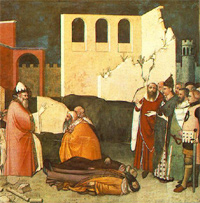

The book certainly contains a lot of information, some of it easily available elsewhere. Ett perspektiv på senmedeltidens Sverige, Stockholm, 2003) may have been too recent for consideration by Benedictow, but he consistently disregards any modern Norwegian historian who disagrees with him. Janken Myrdal's thorough research on the plague in Sweden ( Digerdöden, pestvågor och ödeläggelse. Further suspicions are raised when you turn to the chapters on Scandinavia. The reader is left wondering what else Benedictow may have ignored because it does not agree with his points of view. They do not figure even in the bibliography.

It is, of course, quite legitimate to uphold the traditional diagnosis and to disagree with biologists and historians such as Graham Twigg ( The Black Death: a biological reappraisal, London, 1984), Susan Scott and Christopher Duncan ( Biology of plagues: evidence from historical populations, Cambridge, 2001), Samuel K Cohn Jr ( The Black Death transformed: disease and culture in early Renaissance Europe, London, 2001) and other critics of the traditional diagnosis, but it is not-to put it charitably-an acceptable scholarly approach simply to pretend that they do not exist. And Benedictow's dissertation ( Plague in the late medieval Nordic countries, Oslo, 1992) was exactly an attempt to explain how this tropical disease could actually spread in a sparsely inhabited (and rather cold) country such as late medieval Norway.Īt no point, however, is there any indication in Benedictow's new Complete history that this diagnosis has been called in question over the last thirty years and that many (if not most) specialists today consider the diagnosis untenable and refrain from trying to identify historical plague with any modern disease. Even in the first part of the book, which considers the nature of the plague, this becomes apparent.īenedictow has always been a strong advocate of the conventional retrospective diagnosis, which identifies late medieval and early modern plague with modern bubonic plague, a primarily tropical disease spread by rats and fleas, a diagnosis which originated with Alexandre Yersin himself. It is, however, not a very reliable guide. It aims at presenting the “Stand der Forschung”. It is complete in the sense that it seeks to sum up present knowledge of the Black Death, how and when it spread, the mortality and the consequences.

The author hastens to explain that this is not the case: the book is not and cannot be a definitive history. At first sight the subtitle of this book may seem somewhat pretentious.


 0 kommentar(er)
0 kommentar(er)
